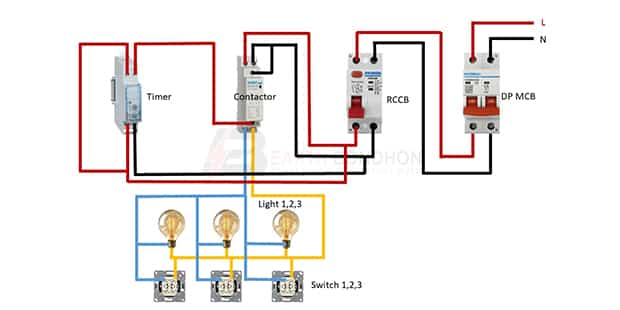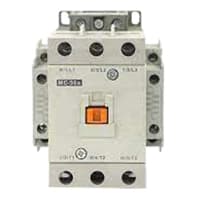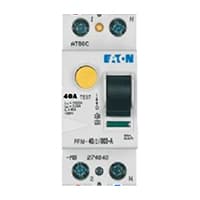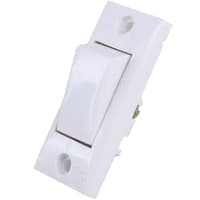Lighting contactor wiring diagram:
This diagram shows the lighting contactor wiring diagram. In this circuit, we use a timer, a contactor, an RCCB( Residual Current Circuit Breaker ), a DP MCB(Double Pole Minature Circuit Breaker ), 3 lights, and 3 switches. First, we need to connect the DP MCB with a power source, then connect RCCB with the DP MCB, then connect the contactor with RCCB, then connect the timer and light switch with the circuit.
Advertisements
Components needed For this Project:
You can get the components from any of the sites below:
- 8 Pin Timer 220V AC [See Buy Click Amazon]
- Magnetic Contactor 40A [See Buy Click Amazon]
- DP RCCB 16A [See Buy Click Amazon]
- DP MCB 16A [See Buy Click Amazon]
- CFL Light [See Buy Click Amazon]
- Gang Switch [See Buy Click Amazon]
*Please note: These are affiliate links. I may make a commission if you buy the components through these links. I would appreciate your support in this way!
Advertisements
Components used to make the Lighting contactor wiring:
A timer is a type of time-switching device that controls and controls Electrical circuits and electrical and electronic devices through time setting (on/off). The timer is basically 8-pin. Like other controlling devices the timer has a coil and when this coil is magnetized, the timer works on/off. The timer has 2 common ends and each common end has normally close and normally open options. When the timer is set by time, the timer trips at the end of that time and turns the common is normally closed (on) to open (off) and normally open (off) to close (on). This is how the timer works.
02. Magnetic Contactor:
A magnetic contactor is an electromagnetic switching device. It is generally used for controlling 3-phase Motors. The operation of a magnetic contactor is similar to that of a Relay. but a relay is used for low-power or low-voltage connections, and a magnetic contactor is used for high-power or high-voltage connections. As soon as the supply is applied to the magnetic contactor coil. its normally open contacts are closed and normally closed contacts are opened and the associated devices are also operated. This is how a magnetic contactor works.
The Residual Current Circuit breaker RCCB is the Safest device to detect and Trip against Electrical Leakage current. This ensures protection against Electric shock Caused by indirect contact. Circuit breakers (CB) are automatically Operated Electrical Switches that Protect Electrical Circuits from Short-Circuiting or Overloading systems. It Protects against many major accidents. RCCB Circuit Breaker is an Electrical Wiring device whose function is to disconnect the current in the circuit.
04. DP MCB:
DP MCB In 2 Pole MCB, switching & protection is affected in phases and the neutral. A Double Pole or DP Switch is a Switch that Controls 2 Circuits at the same time. In terms of Residential Switching, this Normally means it Switches the live and Neutral at the same time. In Layperson Terms, Double Pole switches or DP Switches are Exclusively Designed to Control 2 Different Electrical Circuits at the same time, which allows the Appliances to Isolate safely and reliably. Fan or light Combinations and Medical Equipment are some of the many applications for DP Electrical Switches and Electrical components.
CFL stands for Compact Fluorescent Lamp which is an improved version of tube lights of earlier days. Like tube lights, it is a vacuum glass tube with fluorescent powder coating which is not as long and straight as tube lights but curved/twisted compact, or small in size. Like a tube light, it has electrodes or filaments at both ends. But in this case, instead of a choke, there is an electronic circuit that drives the Compact Fluorescent Lamp. Because the red wave is less in the light of the Tubelight and Compact Fluorescent Lamp, the object looks a little pale or the correct color of the object does not appear.
06. SPST Switch:
An SPST (Single Pole Single Throw) Switch is a Switch That only Has a Single Input and can Connect Only to one Output. This means it Only Has one Input Terminal and Only 1 Output Terminal. A Switch is a Mechanical or Controlling Device That Changes the Flow of Current Direction or Interrupts the Flow of Current Within a Circuit diagram. An electrical line using Single Pole Single Throws (SPST) is Perfect for on-off switching. When the SPST is closed, the Circuit is Closed and the light from the lamp switches on the system. When The Single Pole Single Throw (SPST) is then opened, the light from the lamp goes out and the Circuit is off.
Thank You for visiting the website. Keep visiting for more Updates.
Frequently asked questions
1. AC1– Non-inductive or slightly inductive rows.
2. AC2– Starting of slip-ring motors.
3. AC3– Starting squirrel-cage motors and switching off only after the motor is up to speed.
Why would you use a lighting Contactor? These contractors are used to control power to lighting or non-inductive heater loads. Lighting contactors are ideal for large resistive loads, and multiple circuit diagrams.
A contactor has 3 components: The contacts are the current diagram-carrying part of the contactor. This includes power supply contacts, auxiliary contacts, and contact springs. Contact material was chosen for high electrical conductivity, mechanical strength, and stability under arcing and oxidation.
The symbol for a contactor was typically represented as a box with a diagonal line through it, which indicates that it is a contactor. Contactors were commonly used in electrical circuits to control the flow of electricity to a load.
110v has been used in industry for many years and has proven to be an ideal level for the control voltages with contactors.
Read more Single Phase Wiring
What is a kilowatt-hour (kWh) | kwh formula | What does kwh mean
Introduction to Electrical Units and CircuitskW and kWh on your electricity bill As your home uses electricity during...
What is the Difference Between kVA | What does KVA mean | kVA formula
Difference Between KVA ExplainedWhat does KVA Mean? There are technical terms aplenty when it comes to generators, and...
Power Factor | Power Unit | Energy | Electricity Unit
Power factor definition | Calculating Power FactorPower Factor Values In a purely resistive circuit, the power factor...







0 Comments